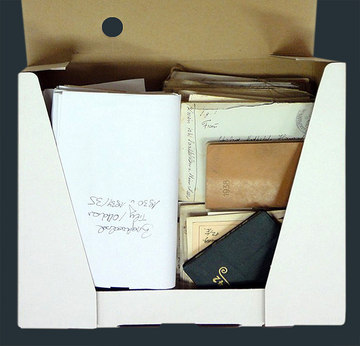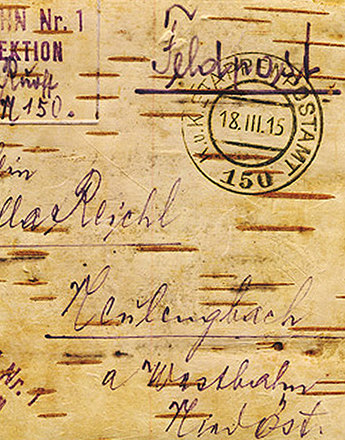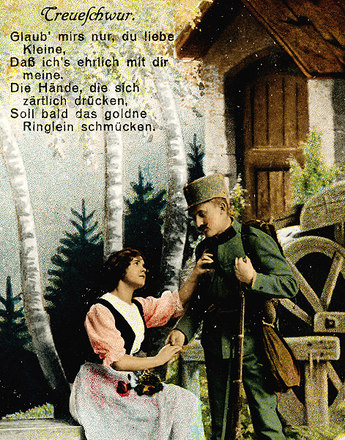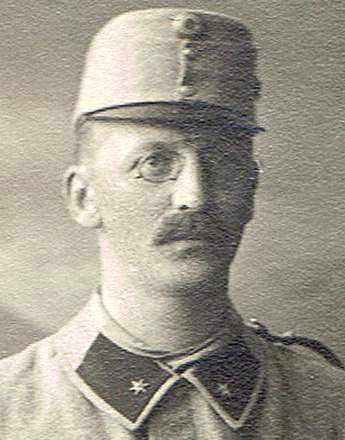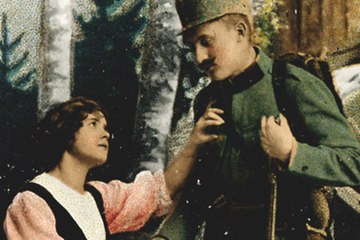In 1989, as part of an exhibition celebrating seventy years of women’s suffrage in Austria, a group of female historians, headed by Edith Saurer (1942–2011), professor of Modern History, an important pioneer and representative of the history of women and gender in Austria, placed an appeal in the press for private holdings of letters and documents relating to this topic. This appeal led to contact with the descendants of Mathilde Hanzel-Hübner, as a result of which the first extensive holdings of accounts and letters were handed over to the archive.
Today the literary estate of the Hanzel-Hübner family constitutes one of the largest holdings in the Sammlung Frauennachlässe and has been worked on as part of several research and publication projects. It preserves documents from Mathilde Hanzel’s forebears from the second half of the nineteenth century as well as extensive material from her own childhood together with diaries and correspondence with female friends, with fellow campaigners in the first women’s movement in Austria (Allgemeiner Österreichischer Frauenverein; General Austrian Women’s Association), with her daughters and with her husband Ottokar Hanzel.
From the time of the First World War more than 2,000 field post letters and postcards have been preserved. The major part of these – apart from brief periods in the first two years of the war when both also used short-hand – are written in Kurrent (old German script) on writing paper, in both ink and pencil. Although the orthography is conventional, the handwriting – often faded and in tiny Kurrent script, makes some passages very difficult to decipher, especially in the case of pages written in pencil.
As is the case with many other holdings of field post, some letters are missing from the correspondence, in particular letters written by Ottokar Hanzel. This is unusual; often it was the letters written by the women that went missing at the front, whether due to enemy attacks or sudden troop movements during an offensive. However, this does not mean that women’s letters to soldiers are only rarely preserved. The correspondence between Mathilde and Ottokar Hanzel is only one example of the large number of extant letters written by women to soldiers at the front during the First World War.
Translation: Sophie Kidd
Bernold, Monika/Gehmacher, Johanna: Auto/Biographie und Frauenfrage. Tagebücher, Briefwechsel, Politische Schriften von Mathilde Hanzel-Hübner (1884-1970), Wien 2003
Gerhalter, Li unter der Mitarbeit von Brigitte Semanek: Bestandsverzeichnis der Sammlung Frauennachlässe am Institut für Geschichte der Universität Wien, 2. Auflage, Wien 2012
Gerhalter, Li: „Quellen für die Frauen- und Geschlechtergeschichte haben wir auf jeden Fall benötigt“: Die Sammlung Frauennachlässe am Institut für Geschichte, in: Szemethy, Hubert/Klemun, Marianne/Fuchs, Martina (Hrsg.): Gelehrte Objekte? – Wege zum Wissen. Aus den Sammlungen der Historisch-Kulturwissenschaftlichen Fakultät an der Universität Wien (= Ausstellungskatalog des Österreichischen Museums für Volkskunde), Bd. 98, Wien 2013, 122-141
Hämmerle Christa: Entzweite Beziehungen? Zur Feldpost der beiden Weltkriege aus frauen- und geschlechtergeschichtlicher Perspektive, in: Veit Didczuneit/Jens Ebert/Thomas Jander (Hrsg.): Schreiben im Krieg. Schreiben vom Krieg. Feldpost im Zeitalter der Weltkriege, Essen 2011, 241-252
Rebhan-Glück, Ines: Liebe in Zeiten des Krieges. Die Feldpostkorrespondenz eines Wiener Ehepaares (1917/18), in: ÖGL (2012), 56/3, 231–246
-
Chapters
- How does a collection of letters come to be stored in an archive?
- The protagonists: Mathilde Hübner and Ottokar Hanzel
- Love, marriage, career
- The separation begins
- ‘War fever’ versus the longing for peace
- Italy’s ‘betrayal’ in 1915
- ‘… surely this war must end some time?!’
- ‘… and tomorrow we will start cheerily canvassing for peace.’
- Black marketeering, profiteering and self-subsistence
- A love affair in wartime

